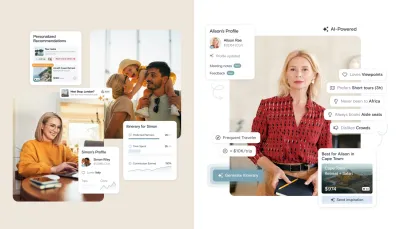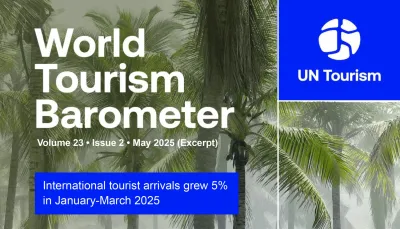Personalized travel offers
Augmented reality in aviation
Direct booking incentives
AI in trip planning
Super-apps for travel
Customer journeys: Making the digital connection from A to Z (and back)...

Personalized travel offers
Augmented reality in aviation
Direct booking incentives
AI in trip planning
Super-apps for travel
While they push for innovation, most airlines and airports must also grapple with a significant technical debt of outdated infrastructure and software. These legacy technologies, often too essential or costly to replace easily, can hinder the seamless integration of new digital solutions. Striking a balance between leading-edge technologies and maintaining existing systems, therefore remains a persistent challenge in the aviation sector’s pursuit of digital transformation.
However, as they transform, airlines and airports have intensified their focus on digital retailing, deploying technology to enhance the entire passenger experience. They are using personalized offers and innovative digital platforms to improve travellers’ interactions and engagement with services.
These include common problems faced by travellers such as combining various services in one purchase and the complexities of navigating multiple payment interfaces. While it is encouraging to see investments heading in the right direction, there’s likely some way to go before leaders’ and travellers’ perceptions totally align. Adapting swiftly to evolving technologies, maintaining customer trust, and meeting regulatory requirements remain pivotal for airlines striving to revolutionize digital retailing in aviation.
Augmented reality (AR) and virtual reality (VR) technologies promise to enhance both customer experience and operations (e.g., maintenance, MRO, pilot training, design prototyping, to name a few.) That makes them a priority investment for airlines and airports. Augmented reality (AR) and virtual reality (VR) applications offer immersive and interactive experiences that can help passengers make more informed decisions. They can do this, for example, by showcasing cabins, amenities, and destinations. These technologies can also be used in airports to help passengers navigate their way around and receive real-time information and guidance. All of this can help reduce stress and enhance satisfaction.
Taking (back) control of the customer
A key focus for airlines and airports today is the ability to wrest control back from third parties – and to better engage and cater to customers through direct channels. A few low-cost carriers (LCCs) have already achieved this. A key part of this includes encouraging customers to book directly through airline and airport platforms by offering exclusive deals, personalized offers, and loyalty rewards. Providing a user-friendly and efficient booking experience is crucial too. And this needs to be complemented with data analytics and AI to understand and predict customer preferences and behaviour.
A digital core for tomorrow’s retailing
Airlines and airports are bringing together generative AI, cloud, and data to provide seamless, personalized, and dynamic retail experiences. This digital core will enable them to offer tailored packages, ancillary services, and personalized offers. That will give customers more choice while also streamlining backend operations. The convergence of these technologies underpins a more agile, customer-centric approach to retailing, including both sales and service. That’s vital to increase customer satisfaction and loyalty, and to grow revenues.
A co-pilot for trip planning
Airlines are testing and piloting the capabilities of generative AI to revolutionize trip planning, search and booking processes. Generative AI algorithms, powered by vast data sets and machine learning, will enable airlines to provide travellers with more personalized and efficient services. However, to date, only a few companies are using generative AI to support their customers’ inspiration, search and booking.
This is your GenAI-powered chatbot speaking
The aviation industry is seeking to implement generative AI capabilities within chatbots to revolutionize customer service and engagement. By leveraging GenAI, airlines will be able to enhance chatbot functionalities so that they can efficiently handle a wider range of queries, anticipate customer needs, and deliver more accurate and relevant personalized responses - while reducing the workload on customer support teams. From personalized travel recommendations, seat preferences and in-flight entertainment choices to targeted promotions and loyalty programs, AI enables airlines and airports to cater to individuals.
New retail strategies – building super-apps
Super-apps aim to offer consumers a digital, one-stop range of services, including hotel reservations, car rentals, ancillary purchases, travel experiences, destination information and more – all within a single user-friendly application. By adopting a super-app approach, airlines seek to provide travellers with an all-encompassing digital ecosystem that goes beyond flight bookings. Airlines are also increasingly bundling offers from various partners, including hotels, car rentals and experiences, to create comprehensive and seamless travel packages. The aspiration is to create a more integrated travel experience, encouraging loyalty and simplifying the planning process for customers.



